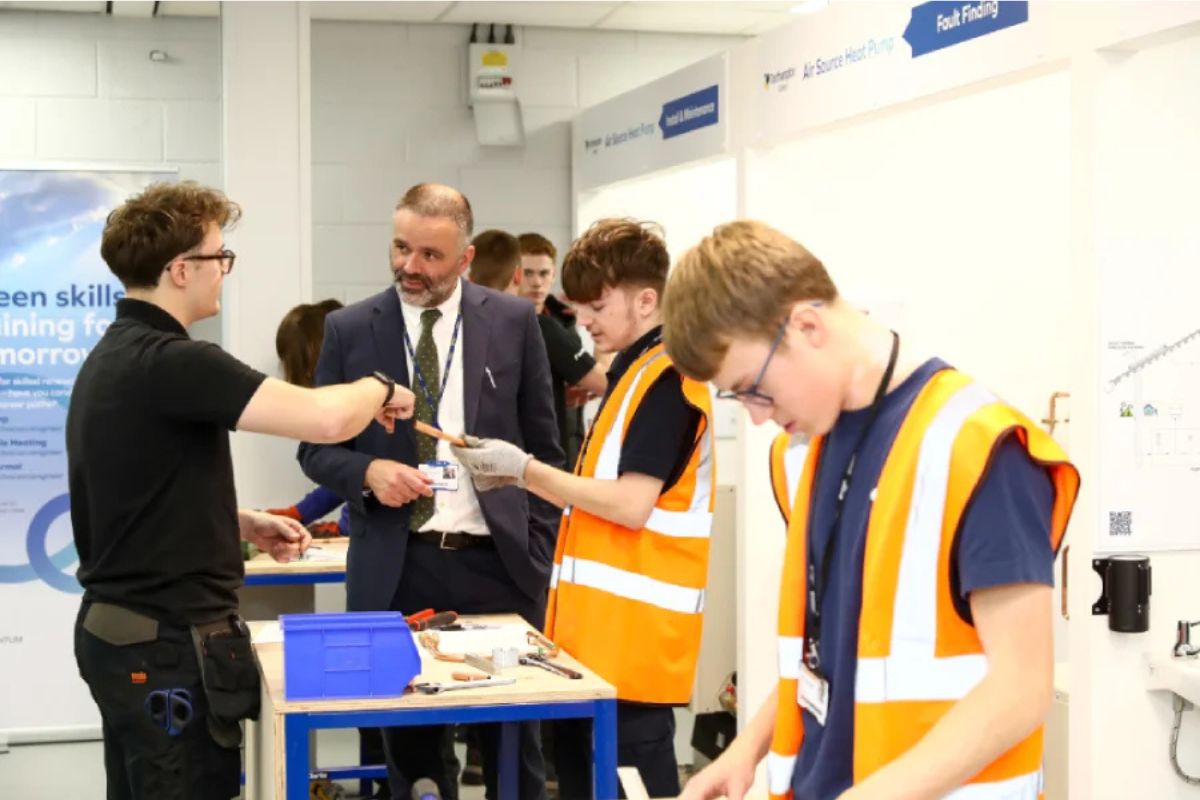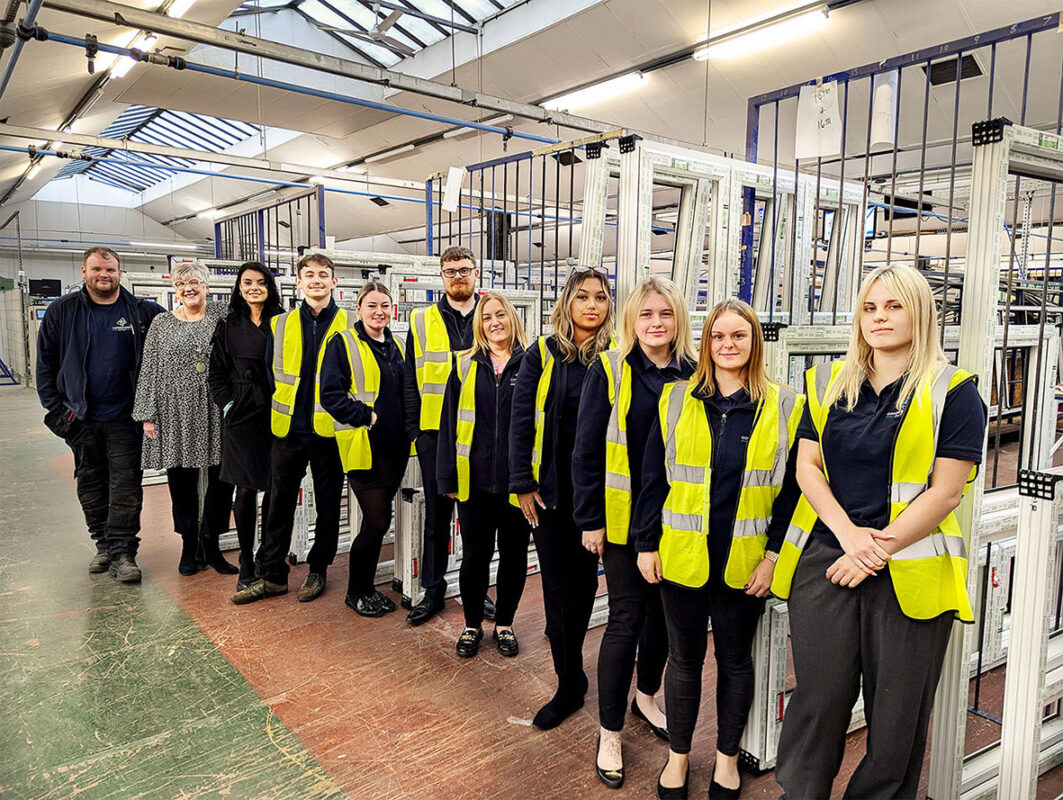Promoting apprenticeships and vocational education – the business perspective

‘Could you please ensure you promote our Sixth Form properly?’ A handwritten memo delivered to me with passion. I was the school’s careers advisor, she was the was the headteacher. It was the late 90s but the incident still resonates.
The debate about parity of esteem between academic and technical routes seems unrelenting, even now, as a high contested area in the passage of the Skills Bill around the Baker Clause.
And while we have seen some success, with schools and colleges reporting more young people learning about apprenticeships and research suggesting parents are increasingly positive about vocational options, there is still a lot of work to do.
The challenge of employers and schools speaking past each other
Most historic efforts to promote technical pathways have worked with the three main constituencies at the sharp end of this issue – young people, educators and employers. But too often this has been done separately.
At its worst, these groups have even been set up in opposition to one another. Centralised services delivering directly to young people have failed to penetrate the psyche of the school that has sixth form recruitment targets to meet, or failed to nullify the persistent cry from employers to have ’work-ready’ young people.
Permeating both is how we to amplify technical and vocational learning.
Working with businesses to promote pathways
Employers have a deep-rooted interest in technical and vocational education and know that working with schools and colleges is critical.
So what are the key reflections from some of the businesses who are most engaged with our education system? At The Careers & Enterprise Company we have over 4,000 senior business leaders volunteering with schools and colleges, as well as a network of 300 or so ‘Cornerstone Employers’ who drive forward careers education locally.
I recently met with a cross-section of them to understand their perspective on how we best promote apprenticeships and technical education.
From CSR to HR
Inspiring the next generation cannot purely be a moral obligation – important though that is. The more that it is directed by self-interest, the more sustainable it becomes. By demystifying vocational pathways into the workplace, employers are building their talent pipeline, recruiting their workforce and shrinking skills gaps in their sectors.
This was key for one of the major utility companies in the South West. Historically they found teachers in their area weren’t as knowledgeable about their local labour market, and weren’t providing young people with insights into apprenticeships. By working with schools, upskilling teaching staff and creating a direct route to inspire students, this all changed.
For other employers it was about diversifying the talent pipeline. Capgemini, the technology consultancy, designed pre-employment programmes to work with target groups of young people, to influence who then applied for their training programmes.
BAE were interested in growing the number of female engineers in the UK and changing a historically male dominated industry. They found the answer to this challenge involved talking directly to them at school, sparking an interest, letting them experience the workplace and showing how they can move into work straight after school.
Colleges and schools are by far the best, most efficient route for doing this.
Clarity about what works
Businesses want to be informed by evidence of what works in careers education.
One global defence contractor used insights about what works to design a fast-track apprenticeship approach.
At the schools they partnered with, different year groups would learn about different aspects of the business, the routes in, hear from employees directly and ask them questions.
The most engaged would be invited to see the business first-hand – sometimes as work experiences, sometimes as a visit, other times to take part in a project. Then they developed a fast-tracked apprenticeship application process that funnelled the students they knew wanted to work with them more quickly into the business.
Insight into how best to engage students were critical too. While parents love hearing inspiring stories about the chief executive who started on the shop-floor, young people generally relate much more strongly with someone just a few years older than them, who’s actually going through an apprenticeship programme.
Collaboration is key
The next message to come through was how important local collaboration is.
In some areas, where the local labour market was dominated by certain industries or emerging industries were growing rapidly (think engineering across South Yorkshire or green jobs around Hull), working with other businesses to build future talent was mission critical. How do we inspire huge numbers of school leavers to join our sector? What joint events, approaches to engaging schools, or way of influencing the knowledge and skills of teachers works best? Why do we each design our own pre-employment programmes when we could deliver a shared approached? How do we make sure we’re not all engaging the same two or three schools, but hitting thirty or forty of them?
Businesses felt collaboration was becoming much easier. Careers Hubs – the local networks of businesses, schools and colleges focused on preparing young people for the world of work – were seen as one of the ways this was happening. Not only were they helping businesses steal good ideas from each other, but were also giving them direct access at scale to the young people they wanted to inspire.
But what next?
Everyone working in this space knows that while improvements are being seen, we must do more, particularly as the desire for high quality technical routes grows.
There are many deep-rooted, structural challenges that contribute to the inequity between academic, vocational and technical pathways, not least the recent decline in the number of apprenticeships being offered.
While several of these challenges lie outside the issue of young people’s awareness of all pathways – and the careers guidance they receive to inform this – a good understanding of these routes is a pre-requisite to ensure young people choose the best next step for them.
These examples from businesses give me hope. The shoots are perhaps too green to predict that my run-in with a Headteacher twenty years ago won’t be repeated.
But through the continued engagement with employers of every shape, size, type and sector, and by strengthening the link between them and their local schools and colleges, there is a powerful coalition to help more young people leave education and step onto a technical pathway into work.
John Yarham, Deputy Chief Executive at The Careers & Enterprise Company











Responses